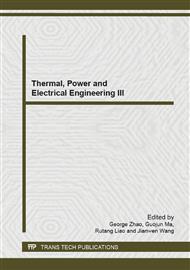p.676
p.680
p.684
p.689
p.695
p.700
p.704
p.710
p.716
Low-Frequency Nanotesla Resolution of Magnetic Field Detection in Metglas/Magnetostrictive/Piezoelectric Laminates
Abstract:
We report nanotesla resolution in a three-phase Metglas/FeNi/PZT-5A multiferroic composite with one end rigidly clamped operating in the first-order bending resonant mode for low-frequency magnetic field detection. Strong bending magnetoelectric (ME) couplings induced by the ununiform strain distribution in the free-clamped magnetostrictive beam are achieved without the benefit of nonmagnetic tip mass, and its natural resonant frequency is much lower than that in operating free-free mode. In addition, high-permeability materials Metgals are attached on the magnetostrictive beam for magnetic flux concentrating and resolution improvement. Experimental results reveal that the three-phase ferromagnetic/magnetostrictive/piezoelectric composite with a cantilever beam structure exhibits a high bending ME coefficient of ~32.17 V/cm·Oe at the resonant bending frequency of 819Hz under Hdc=175Oe. At the resonant excitation, the maximum resolution of 7nT is acquired under Hac=1Oe. The proposed ME cantilever structure with high resolution provideds a promising application in low-frequency magnetic transducer and sensors.
Info:
Periodical:
Pages:
695-699
Citation:
Online since:
June 2014
Authors:
Price:
Сopyright:
© 2014 Trans Tech Publications Ltd. All Rights Reserved
Share:
Citation:


